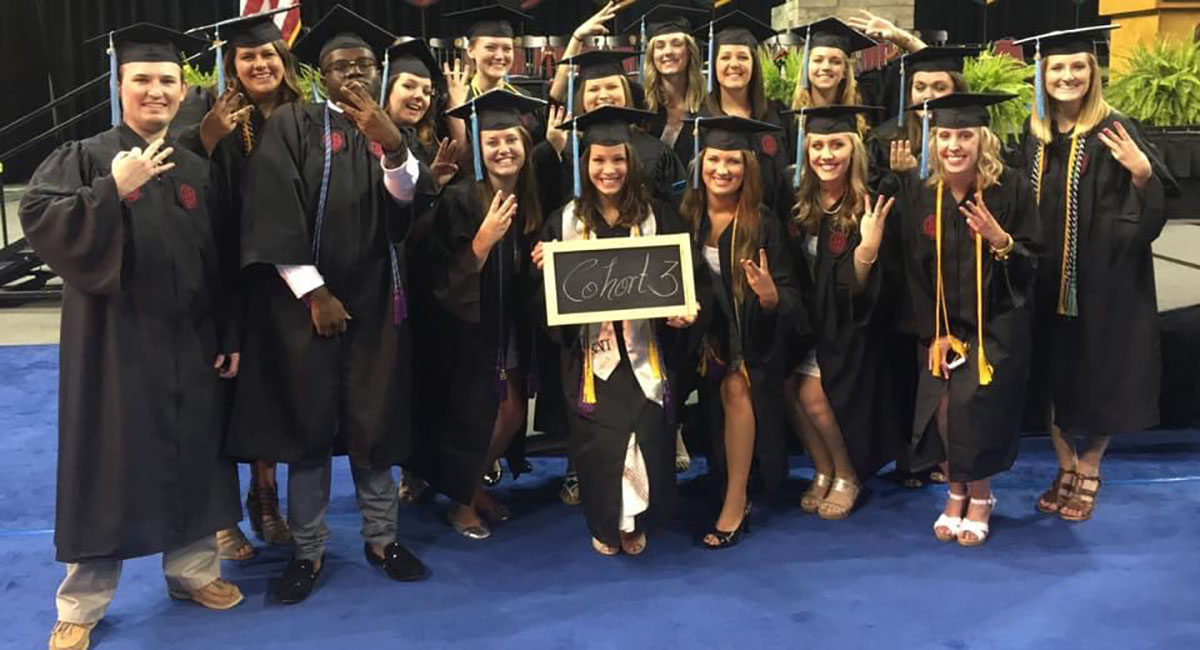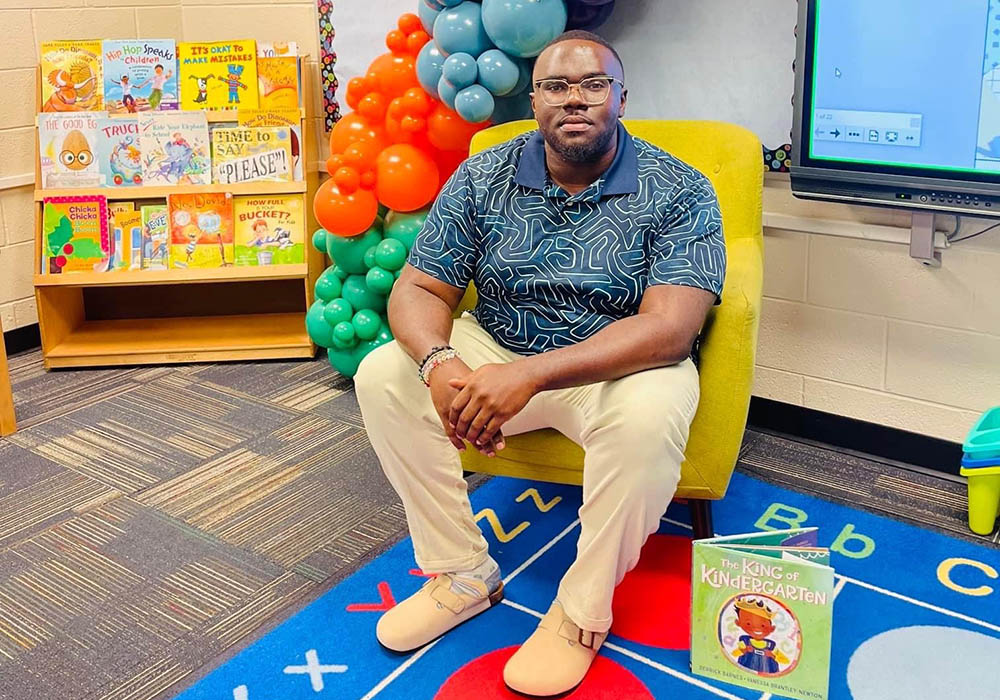Charleston native Keith Heyward Jr. was a restless third-grader when he realized his career goal was to teach. In the years since kindergarten, the inquisitive boy regularly had been disciplined for “talking too much” in the classroom. Now he realized he might use this questionable attribute for good.
“Third grade was the turning point when I came into my personality. It’s true. I was loud-mouthed and open,” the University of South Carolina alumnus recalls. “I am definitely the person who will stand up and speak for the group. If I felt something was not right, I was going to say something.”
In K-12 education, what wasn’t quite right (and remains so) was an absence of Black male teachers, a deficit that some believe contributes to a de facto marginalization and silencing of Black boys.
I am single, but I have 21 little children for eight hours a day!
“Sometimes I see children losing their voices, especially once they get older,” Heyward says. “I think the school may play a part. I am definitely not trying to quiet someone down. My classroom is a controlled free-for-all.”
Today, Heyward teaches kindergarten at James Island Elementary School. He has learned a lot about the challenges of parenting in his dual roles as teacher and father figure.
“I am single, but I have 21 little children for eight hours a day!” he quips.
When he is not in school with the little ones, Heyward has been helping raise his two nephews since their birth — Kaiden, now a sixth-grader, and Ja’mauri, a 10th-grader. That immersion in parenting has only strengthened his love of children.
“I have become a father figure to them,” he says. “The Lord chose me for a reason, so here we are.”
‘Each one, teach one’
Heyward is a clear minority in early education. Only 3 percent of kindergarten teachers in America are men, and fewer than 2 percent are Black men. Statistically, boys in general lag academically behind girls in K-12 education by as much as one grade.
A recent national study published in the peer-reviewed journal Early Education and Development found that very young children taught by teachers of the same race experience improved scores in reading, math and basic problem-solving by age 7.
Existing research identifies key benefits of having teachers matched to students’ gender and race: stronger engagement, an expanded model of masculinity, and instruction that may be more familiar and in tune with the students’ cultural background. Some 31 percent of Black children grow up without a father in the home, leaving many without a positive male role model in their everyday life. Having a Black man leading the classroom lets young Black boys see authority, intellect and success in someone who looks like them. It also helps instill a sense of belonging and the ability to imagine similar potential in themselves.
You can be the toughest dude in the room, but these children are going to love you and touch your heart.
The importance and responsibility of mentorship is ingrained in Heyward. “There’s an African proverb — ‘Each one, teach one’ — that I live by,” he says. The term originated during slavery when African Americans were denied access to education. It meant that when a slave learned a skill, such as reading or writing, they were obliged to teach another.
From a very young age, Heyward remembers not feeling seen in school.
“I am a product of my environment. My schooling was not the most pleasant,” he says. “I now see the reason why I got disciplined a lot. I was extremely talkative.”
Heyward was among several male kindergarten teachers featured this summer in an article in The New York Times. “I try to be a voice for children who look like me, act like me, sound like me,” he told the Times interviewer.
‘Real, genuine love’
“My favorite teacher in the whole, wide world is Ms. Tamblyn, my first-grade teacher at St. Andrews Elementary School,” Heyward recalls. “I had been mistreated in kindergarten, so my mom moved me to another school.” At the new school, Tamblyn pulled him into the warm embrace of kindness and acceptance. “It was just like real, genuine love. The love that she gave me, being that city boy who didn’t fit the norm. She made me comfortable. I wrote her a long message on Facebook to say thank you for providing my safe space that year.”
Heyward makes sure the youngsters who step into his classroom feel safe and empowered. Books are a mainstay, and he is grateful that his mother kept lots of books at home while he was growing up. Above all, Heyward wants to ensure that his students are confident and comfortable being themselves.
“When it comes down to teaching, I know for a fact that I have a God-given talent,” he says. “You can put any lesson in front of me, and I may be nervous at first, but I know I will rock that lesson out.”
One of Heyward’s strongest teaching tools is pure creativity. His imagination and artistic vision translate well with developing minds, and he encourages students to express themselves through all media. This gift fuels a prosperous side gig for Heyward, who offers graphic design and professional styling for events. Clients keep him busy in his free time, but the kids always come first.
“Creativity plays a huge part in my life,” Heyward shares. “I say I am a teacher by day and graphic designer by night.”
‘Forever to Thee’
In creating a classroom environment that embraces imagination, respect and cultural sensitivity, Heyward culled from experience at USC, where cultural diversity was top of mind.
Of particular influence was his participation in “Cohort 3” during his junior and senior years. The College of Education’s Urban Education Cohort program groups early childhood education majors into cohorts of about 25 students each to develop teacher-leaders with an in-depth focus on equity issues.

“I say without bias that mine was the best cohort,” Heyward says. “There was only one other male and myself in a group of all women. Just to be in a room filled with white females can be a challenge. But those girls welcomed us from the start.”
Heyward’s advice to young men of color who might consider a career in education is to go for it. Any skills they have can be positively applied in the school community, and there is nothing unmasculine about such contributions.
“I say be yourself. You don’t have to water down any version of yourself,” he says. “Each one, teach one. You can be the toughest dude in the room, but these children are going to love you and touch your heart. We all have skills and talents that can be brought into the school and help children go to the next level.”
When it comes down to teaching, I know for a fact that I have a God-given talent.
Heyward imagines one day opening an afterschool facility for underprivileged children. It would be a safe place where they can learn academics, social and emotional coping strategies, and new skill sets with a strong focus on technology. He pictures a state-of-the-art computer lab for teaching kids how to navigate technology and flourish in a digitally driven society. He sees such a facility as a significant need in urban communities.
While he taught first grade for seven years and loved it, Heyward has found teaching kindergarten to be his true calling. “These babies grow up so much in a year. Just to see them in their first environment where they can actually let their light shine is such a privilege. To be the first teacher to see that really means a lot.”
The young teacher and entrepreneur often hears from his design clients that he should quit teaching and run those businesses full time, be his own boss. To that, he shakes his head.
“The children have my heart,” he says. “I honestly can’t see myself doing anything else.”
